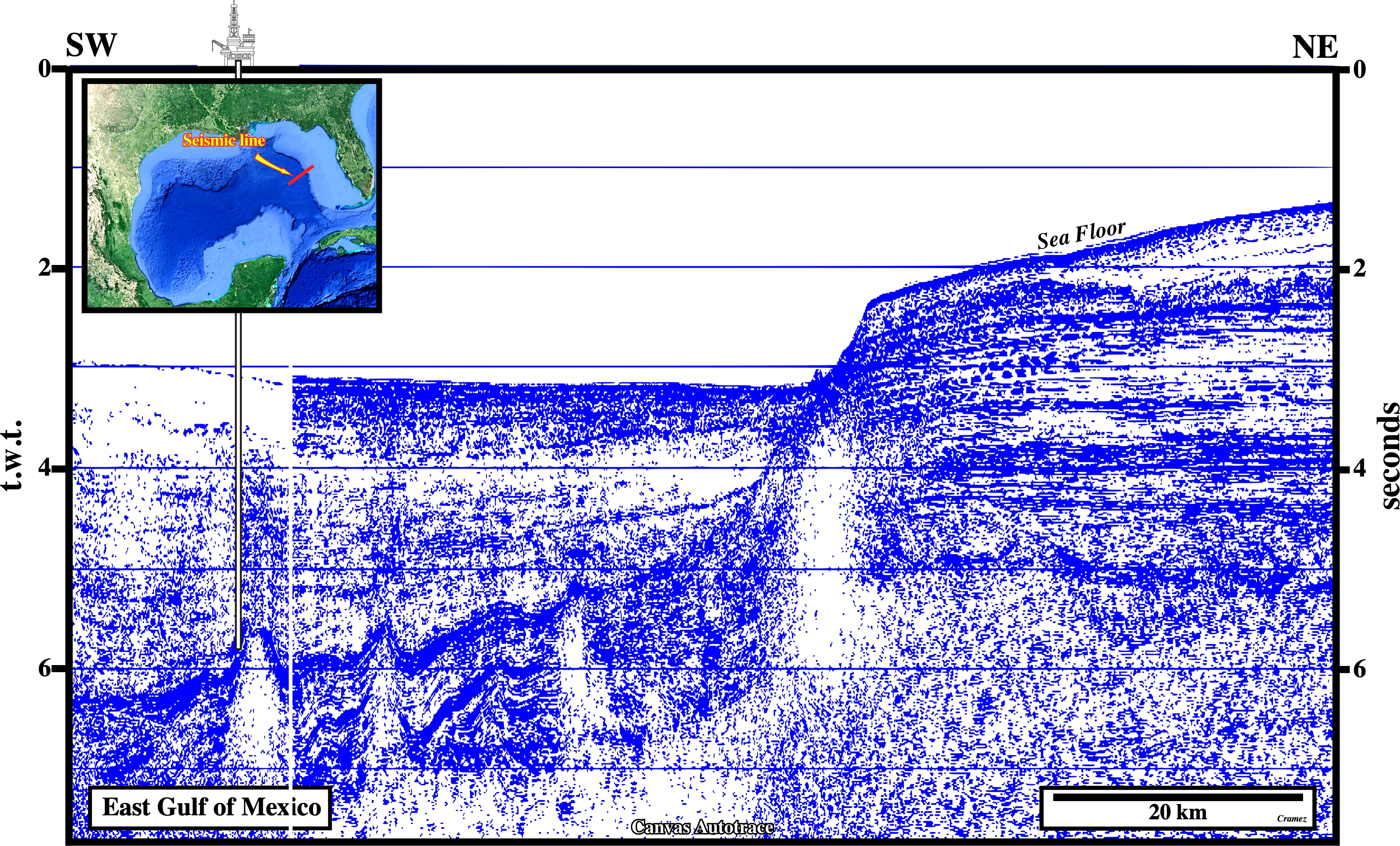

East Gulf of Mexico
Florida Escarpment

The Florida escarpment is the western edge of a tall underwater large carbonate platform, which seems to highlight the limit platform-slope at the Lower Cretaceous. In fact, as illustrated on this cross-section, after the breakup of the Pangea continental crust, which includes Paleozoic strata and Triassic rift-type basins, a Mediterranean-type basin was deposited. It starts with the deposit of lava-flows, nearby the breakup zone, followed by the deposition of the post-Pangea continental encroachment stratigraphic cycle at the bottom of which shallow water sediments and an important evaporitic layer was deposited before a major marine ingression. Such a marine ingression, was, partially, induced by a gradually subsidence of the basement allowing reefs to buildup and form a steep-sided rim of the carbonate platform, which highlights the present day limit between the platform and slope sediments, as corroborate by all seismic line shot on the Florida escarpment (see next autotrace).


This tentative geological interpretation of a Canvas autotrace of a GOM seismic line shot, roughly perpendicularly to the Present Florida escarpment, corroborates the hypothesis, advanced on the above geological cross-section, that it fits with the limit platform-slope in Lower Cretaceous time, i.e., the limit between shallow and deep water sediments. Taking into account the seismic pitfall induced by the abrupt changing in the water depth, such limit seems to be more or less the same till Present time, which implies a sedimentary shelfal accommodation (space available for sediments landward of the basin edge) controlled, mainly, by eustasy, i.e., by the changes of the absolute sea level, as the geometry of the downlap surface landward of the shelf break suggests.
Send E-mails to carlos.cramez@bluewin.ch with comments and suggestions to improve this atlas.
Copyright © 2001 CCramez
Last update:
2022